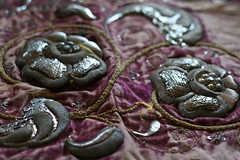
As much as the Barefoot Baklesa loves the sea and open water, the Barefoot Baklesa rarely travels by it. There is this sense of security standing on the beached margins staring into open water as the waves come and go. So, when the barefoot Baklesa learned that the only way to travel to Calapan in Mindoro Oriental would be by Ferry, the apprehension was undeniable. But as this is also for work, and principal photography for this film we are working on will be shot entirely in Mindoro, there was no choice but to brave the ferry at the port of Batangas.

Actually, this would be the Barefoot Baklesa's first trip to Mindoro Oriental; the final destination would be the town of Pola, an hour's drive away from Calapan. After what seemed like a series of delays, from missing the fast craft ferry to losing the bearings of the car tire and nearly falling of a cliff -thank you, Saint Christopher- the Barefoot Baklesa arrived at the town of Pola with Casiligan Elementary School as his first stop; a possible location for school scenes. Oh, did we mention that when we got there the rain poured like crazy? The Barefoot Baklesa seems to have this weird luck that it rains elephants when he arrives.
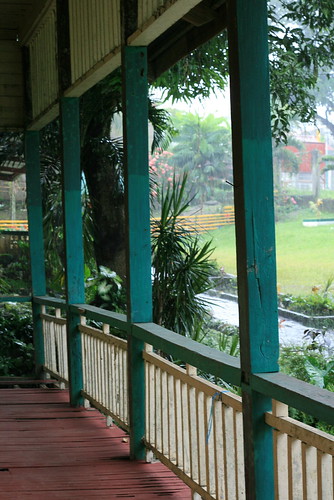

We were warmly welcomed by Ms. Lourdes, the Principal of Casiligan Elementary School. Once you set foot in its gate, one beholds this charming old wooden schoolhouse which, sadly, is a crumbling remnant of the Philippines' American Colonial Past. This particular architectural style called Gabaldon, follows the education law of the same name that mandated schools to be built all over the country for the purpose of public education. The flesh and green painted building constructed from tongue and groove wooden planks with capiz windows takes one back through time; punctuated by the grey skies brought in by the afternoon rain.

Ms. Lourdes represents the best of our Filipino educators: there is a fire within her that has not been extinguished since she first became a teacher. She was welcoming, her stories were told with such zest, with sprinklings of instructions to grade school students as they pass by, and her love for her career is undeniable. The Barefoot Baklesa has seen his share of jaded and embittered educators in his time, too bad they never get to meet the likes of Ms. Lourdes.
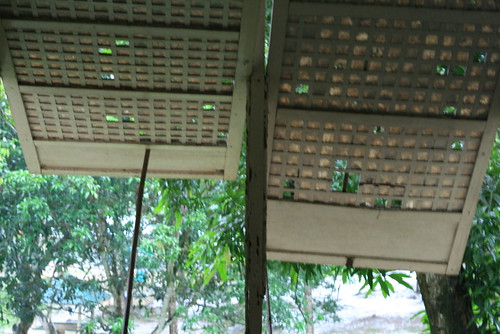
We were served piping hot Maruya, a fried snack made of bananas dipped in a basic flour batter and fried til crisp. It was a welcome meal for the rainy afternoon. As we watched the students come out of their classrooms in single file for dismissal, I can't help but think where social discipline goes wrong and how come Filipinos these days are undeniably disobedient [but let's save that for later].
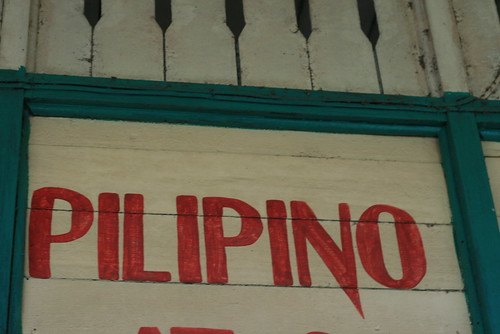
A short drive from Casiligan Elementary School, we arrived at the poblacion of Pola. Unlike most old world towns that follow the traditional town square-as-the-heart-of-the-community planning of the Spaniards called
reducciones, Pola is one of those few exceptions wherein the seat of government and the church are not situated across each other with the town square in between. Instead, the town is plotted in rows of streets to make good use of the coastal terrain.
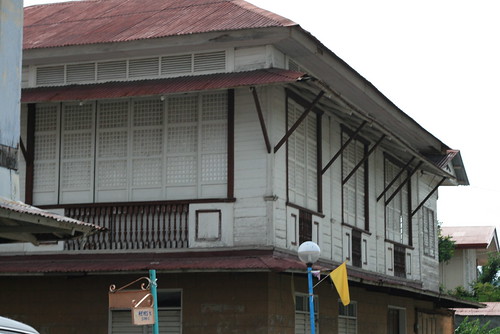
Pola is the birthplace of
Kabayan Noli de Castro, a respected broadcast journalist and former Vice President of the Philippines; then there's Pinoy Big Brother Teen Edition winner Ejay Falcon, both facts that the Barefoot Baklesa had learned only that day.

The structures in Pola seem strangely still, not really frozen, but unaffected in a good way. One has to have a heart for places like these, the humming symphony of human activity is a welcome substitute for the deafening city noise. Turn one corner and it's the sea, The Barefoot Baklesa will definitely enjoy shooting here.

Until the next sojourn...
Thus spake the Barefoot Baklesa











